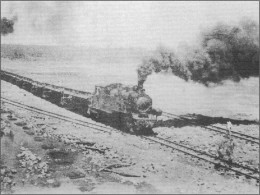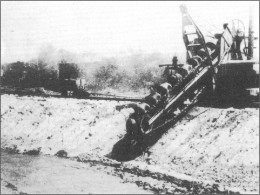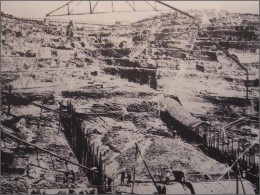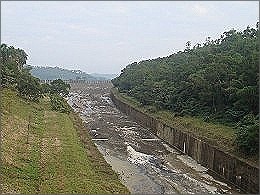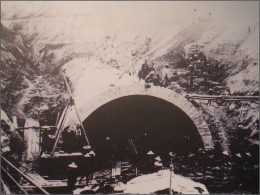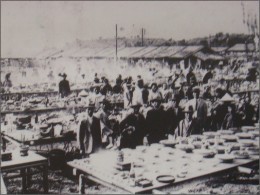|
|
||||||||||||||
 |
||||||||||||||
|
|
||||||||||||||
|
|
..........................................................................................................................................................................................................
▌Due to financial straits, the canal construction was listed as a public reservoir/canal project
The expenditure for the canal construction was estimated at 42,000,000Yen. To The Office of the Taiwan Governor General, this money put it in financial straits. To solve the problem, the construction of the canal was listed as a public reservoir/canal project rather than a government reservoir/canal project. In other words, this infrastructure was the people’s project. The government merely assisted in it. This way, the parties of the irrigation assembly including the proprietors, landowners, and tenants had no reason not to contribute money to help build it. The Office of the Taiwan Governor General was therefore spared from shouldering this large sum of money alone.
However, there was one problem to overcome during the
process. Since the canal was considered a public reservoir/canal, the
government could not intervene with its management. Instead, it was a
private corporate group that took up the responsibility. It means that
the government merely played the role of a “supervisor”. It had no
jurisdiction over or the power to appoint staff. Nevertheless, the
political situations at the time were in favor of the government. The
Office of the Taiwan Governor General had little doubt over its
influence and power. Therefore, it listed the canal as a public
reservoir/canal project. To the government, this decision was
advantageous.
▌Funds were partially subsidized by the government and mostly shouldered by the People
The budget for the Chia-Nan Canal was as high as 42,000,000 Yen but The Office of the Taiwan Governor General only subsidized 12,000,000 of it. The reset of the 30,000,000 was shouldered by parties of the irrigation assembly including reservoir/canal proprietors, landowners, and tenants. This meant that the parties had to shoulder 70% of the total engineering fees. Later on, the canal engineering was severely affected by the Great Kanto Earthquake in Japan, economic recession, and land tax levy etc. The construction was delayed for 4 years at an added cost of 13,000,000 Yen. Finally, the engineering fees accumulated to over 54,000,000 Yen. The National treasury of Japan agreed to pay for half of the expenses. The other half was shared by the parties of the irrigation assembly.
▌10 Years of Hardships
The Chia-Nan Canal Engineering broke ground on September 1st; 1920.Teh
engineering covered the famous Wushantou Reservoir Engineering,
Wushanling Tunnel, Jhuoshuei River Water inlet, Zenwun River Water
inlet, irrigation canal, drainage canal, anti-flood and anti-dampness
equipments. Hachitayoichi speculated that the engineering project would
take 6 years to complete. However, due to many factors, it was completed
in May, 1930. Upon completion, the effective water storage capacity of
Wushantou Reservoir reached 150,000,000 cubic meters, the irrigation
canal extended 1410km, and the drainage canal extended 960km. As for
privately setup small irrigation canals extended about 7,400kms and
small drainage canals extended, 6000km. They were extended to all parts
of Chia-Nan Plain.
First Wushantou Reservoir water drainage after
the water room was completed Other than Wushantou Reservoir, the Wushanling Tunnel Engineering Project was considered the most difficult. The purpose of open the tunnel was to pilot water from Zenwun River to the reservoir and replenish water supply. Open a tunnel in the mountains sounded extremely difficult. To make things worse, not long after digging began, an oil gas pipe caused a major explosion and resulted to 50 deaths. The design had to be changed repeatedly. The short 3-km tunnel took almost 6 years to complete.
▌The Largest Irrigation System in the Fareast
Originally, Hachitayoichi’s speculation for the irrigation area of Chia-Nan Canal was 150,000 kah. However, an investigation conducted a year after the canal irrigation showed that the actual irrigation area was only 136,000 kah. This figure fell over 10,000 kah short in area. Although the irrigation area fell short as compared to the original plan, Chia-Nan Canal is still the largest irrigation facility in Taiwan. At the time, the irrigation area of the irrigation assembly of Taichung Zhou was slightly over 80,000 kah, and the irrigation area of the irrigation assembly of Taipei Zhou was less than 40,000 kah. The irrigation assembly of Chia-Nan Canal was double the irrigation size of the two Taichung Zhou and Taipei Zhou combined. It is no wonder that Chia-Nan Canal was considered a wise investment.
|
|||||||||||||
 |
||||||||||||||
|
|
||||||||||||||
|
▍Hsin Chia Elementary School ˙Houbi Township, Tainan County , Taiwan (R.O.C.)˙2008˙1024*768 |
||||||||||||||
